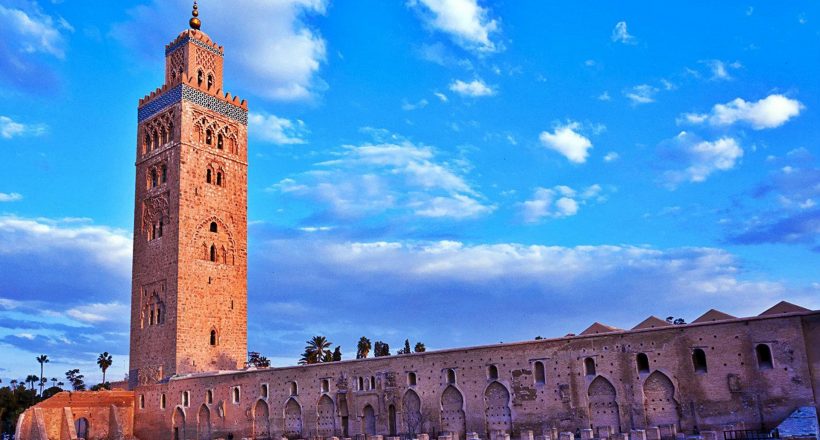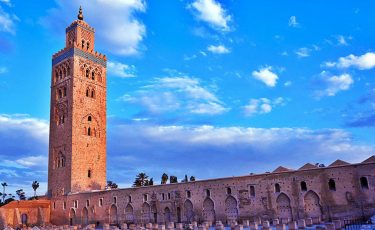Description
Property Name: Koutoubia Mosque
Inventory No: 212-2-2
Date of infill of the inventory form: 2008-02-29
Country (State party): Morocco
Province: Marrakesh
Town:
Geographic coordinates: 31° 37′ 27.11″ N
7° 59′ 38.33″ W
Historic Period: 12th century, 2nd half
Year of Construction: 1162
Style: Almohad
Original Use: Mosque
Current Use: Mosque
Architect: Unknown
Significance
The Almohad caliph, Abd al-Mu’min constructed two mosques at several years’ interval, the second one being immediately to the south of the first and its replica. The first mosque has now disappeared. The sanctuary of the southern mosque has T-shaped aisles. The axial nave is covered with six cuppolas and another five are positioned over the aisle of qibla. The aisles of the sanctuary are framed by lobed and festooned arches. The courtyard is flanked on its shorter sides by aisles, which extend from the sanctuary. The richly decorated minaret is over 60 m high and was completed by Yaqub al-Mansur.
Selection Criteria
vi. to be directly or tangibly associated with events or living traditions, with ideas, or with beliefs, with artistic and literary works of outstanding universal significance
State of Preservation
Kutubiyya was built twice within the space of a few years. Almohad sultan Abd al-Mu’min commissioned the construction of the first Kutubiyya . Construction of the first mosque began between 1147 and 1154, and was completed by 1157; the second mosque was probably built between 1154 and 1162, although sources vary on this. Both buildings remained in use jointly, and that the first mosque only arrived in its ruined state long after. The minbar of the Kutubiyya, now preserved in the ruined sixteenth-century Badi Palace in Marrakesh, was produced in Cordoba in 1137 building was destroyed by the Almohads, but the minbar (pulpit used during Friday prayers) remained in use in the Kutubiyya until 1962; it was carefully restored in the 1990s. The second mosque was built identical to the first except for its orientation because it was realized halfway through construction that the mihrab (prayer niche) was misaligned and not oriented towards Mecca. The mosque in a good condition and open only to prayers.
References
Michell, George. Architecture of the Islamic World: Its History and Social Meaning. Thames and Hudson, London, 1978



